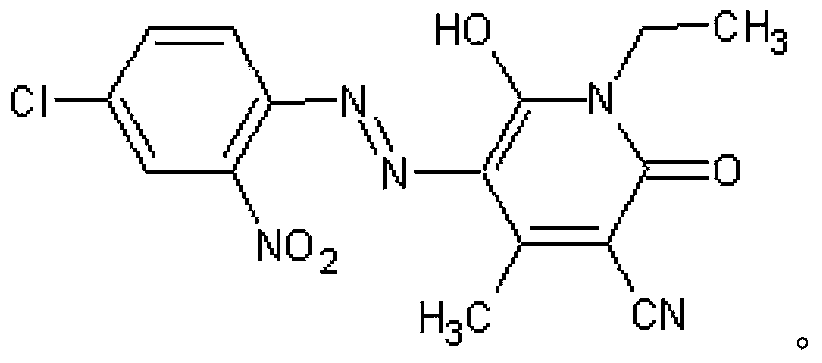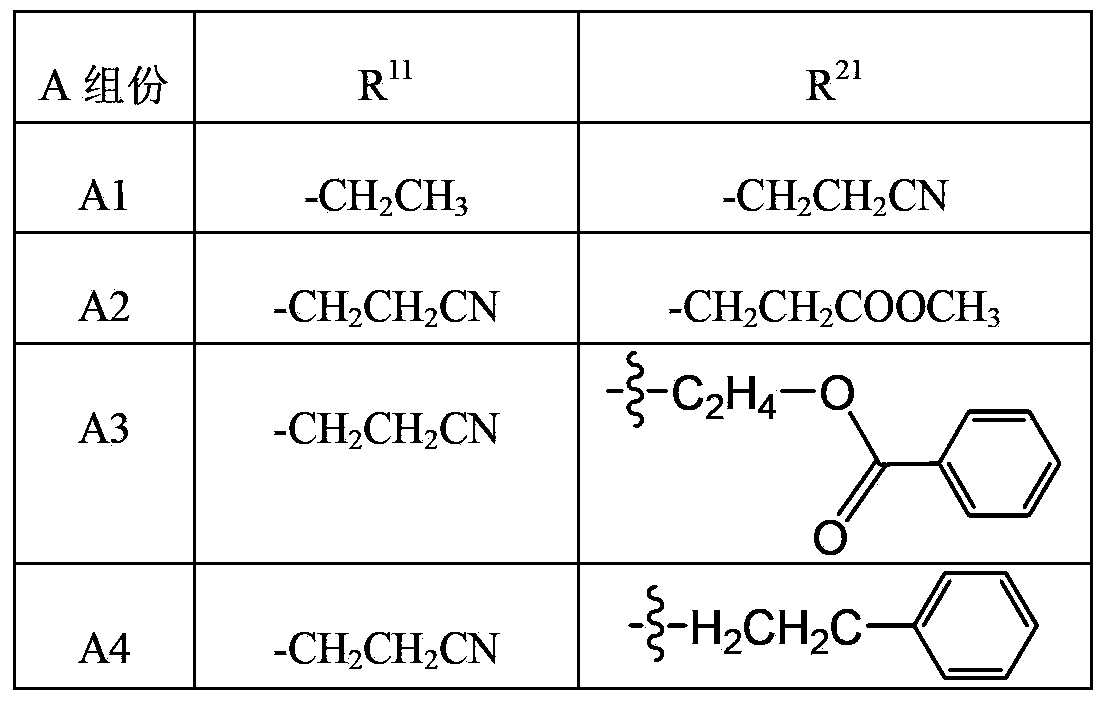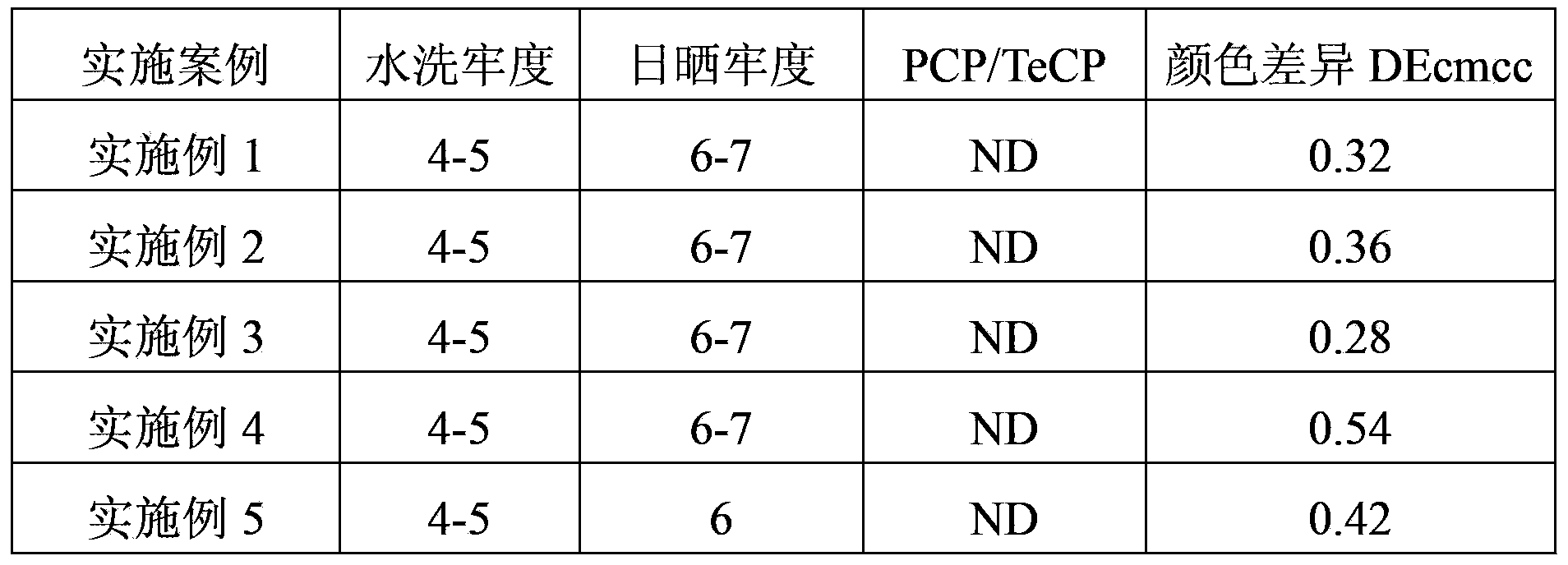Disperse dye mixture
A technology of disperse dyes and mixtures, applied in the field of textiles, which can solve the problems of toxic substances, pentachlorophenol and tetrachlorophenol
- Summary
- Abstract
- Description
- Claims
- Application Information
AI Technical Summary
Problems solved by technology
Method used
Image
Examples
Embodiment 1
[0050] a. Weigh 19.5 grams of A4 dye, 68 grams of B1 dye, and 12.5 grams of the following formula (3), and then weigh 110 grams of auxiliary agent 85A.
[0051] Formula (3)
[0052] b. Add 300 grams of water, grind together in a sand mill for about 3 hours, and then spray dry. The resulting powder must be easily dispersible and soluble in water.
[0053] c. Weigh 0.2 grams of the above obtained powder and 200 milliliters of water to form a solution in a steel cup, adjust the pH value to between 4.5 and 5 with glacial acetic acid, put 10 grams of polyester fiber material into the prepared solution, and use conventional The high-temperature and high-pressure dyeing process was carried out at 130°C for 50 minutes, and then the orange sample was obtained after cooling, washing, rinsing, and drying.
[0054] d. The above-mentioned dye powder sample and the dyed polyester fiber material sample were tested together for pentachlorophenol and tetrachlorophenol, and the results ...
Embodiment 2
[0056] a. Weigh 31.5 grams of A3 dye, 68.4 grams of B1 dye, 0.1 gram of B6 dye, and then weigh 100 grams of auxiliary agent 85A.
[0057] Repeat the above b, c, d operations, the dye powder sample and the dyed orange polyester fiber material sample are tested together for pentachlorophenol and tetrachlorophenol, and the obtained results are all "ND".
Embodiment 3
[0059] a. Weigh 45.73 grams of A4 dye, 54.27 grams of B1 dye, and then weigh 100 grams of auxiliary agent 85A.
[0060] Repeat the above b, c, d operations, the dye powder sample and the dyed orange polyester fiber material sample are tested together for pentachlorophenol and tetrachlorophenol, and the obtained results are all "ND".
PUM
 Login to View More
Login to View More Abstract
Description
Claims
Application Information
 Login to View More
Login to View More - R&D
- Intellectual Property
- Life Sciences
- Materials
- Tech Scout
- Unparalleled Data Quality
- Higher Quality Content
- 60% Fewer Hallucinations
Browse by: Latest US Patents, China's latest patents, Technical Efficacy Thesaurus, Application Domain, Technology Topic, Popular Technical Reports.
© 2025 PatSnap. All rights reserved.Legal|Privacy policy|Modern Slavery Act Transparency Statement|Sitemap|About US| Contact US: help@patsnap.com



